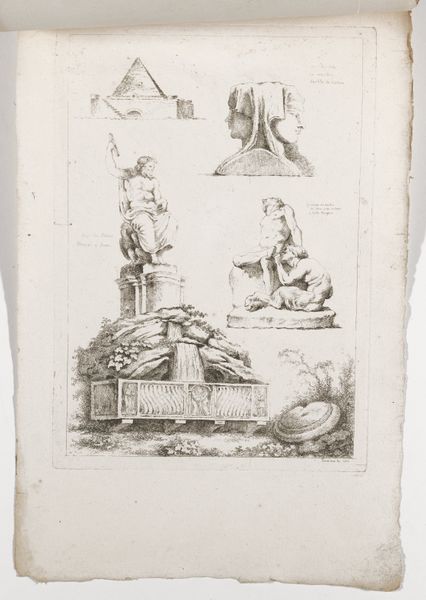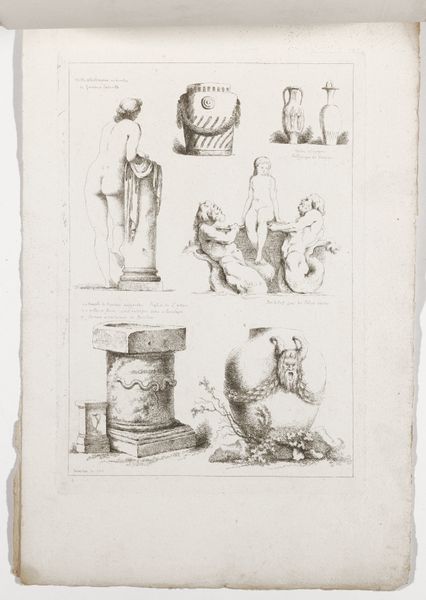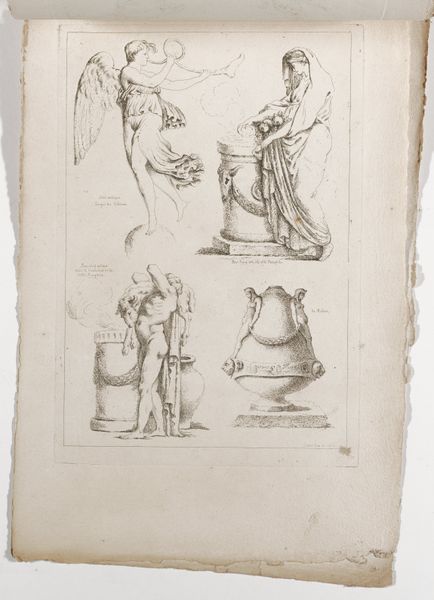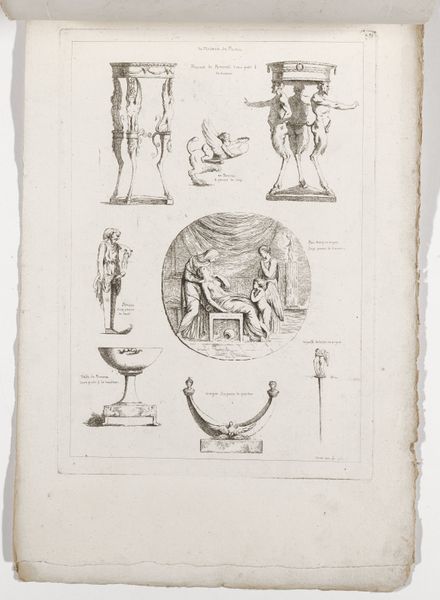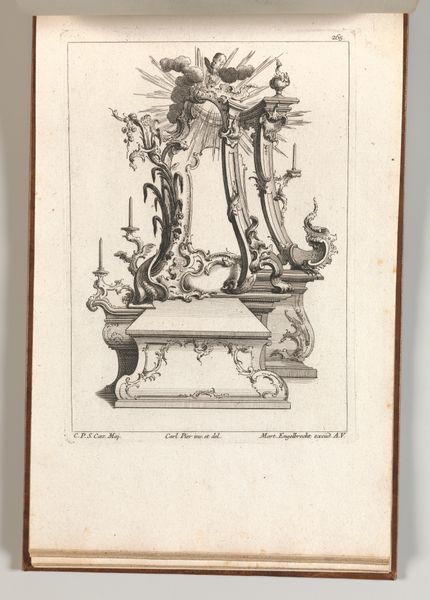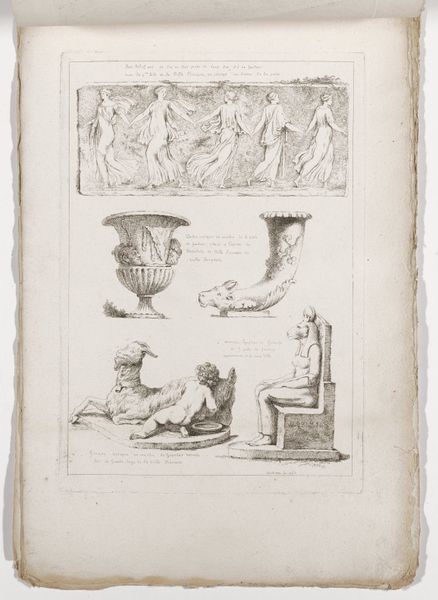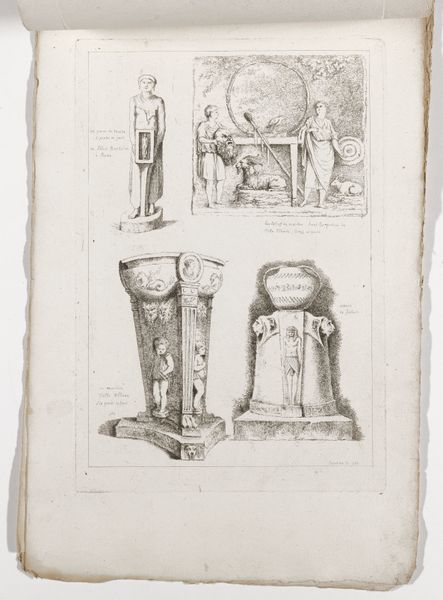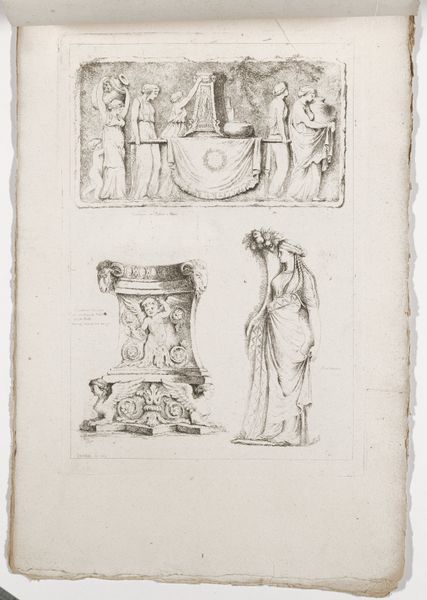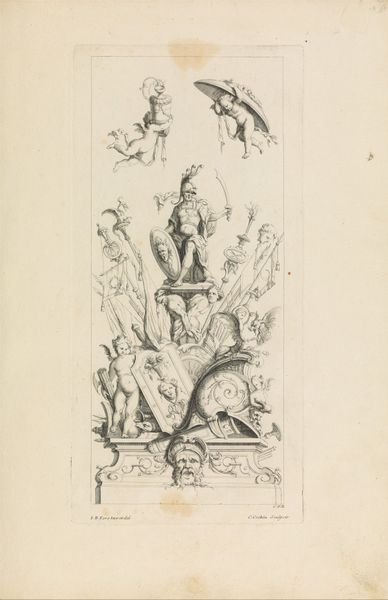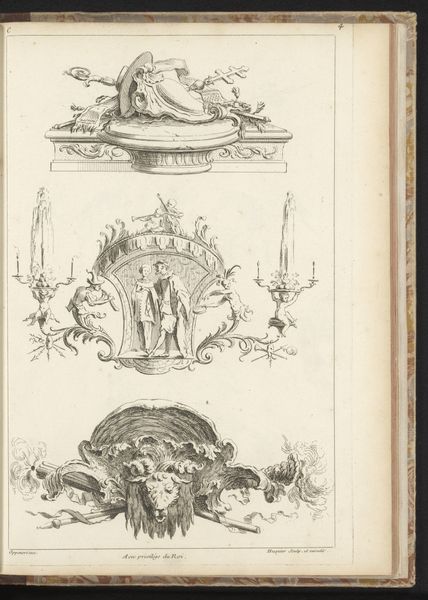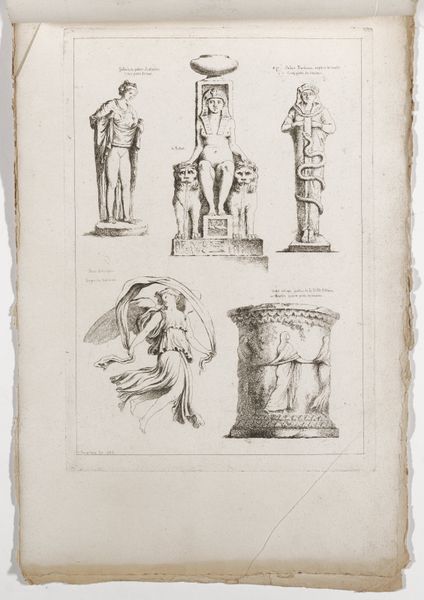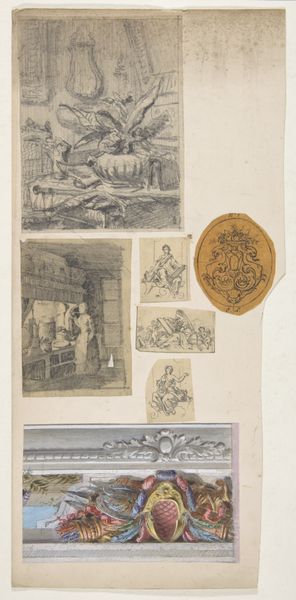
drawing, print, etching, paper
#
drawing
# print
#
etching
#
landscape
#
figuration
#
paper
#
france
#
line
Dimensions: 12 11/16 × 8 11/16 in. (32.23 × 22.07 cm) (plate)17 × 11 5/16 in. (43.18 × 28.73 cm) (sheet)
Copyright: Public Domain
Editor: We’re looking at *Fascicule II* by Jean Claude Richard, Abbé de Saint-Non, made in 1763. It's a print, an etching on paper showcasing different classical figures and objects. It has this neoclassical feel and almost looks like a study page of ancient artifacts. What strikes you most about this work? Curator: I find the reproductive nature of this print most compelling. The Abbé de Saint-Non wasn't just documenting classical forms; he was participating in the burgeoning print market that democratized access to visual culture. Consider the labour involved in producing multiple copies of this etching, how the materiality of paper and ink enabled the wider circulation of classical ideals. Editor: So it’s less about the classical imagery itself and more about the process of making it accessible? Curator: Precisely. Think about the economic implications. Who had access to these images? What was the role of the printmaker versus the original artist of the sculptures and objects depicted? Saint-Non is effectively creating a commodity, mediated through his artistic skill and the physical process of etching. He's tapping into a consumer market eager to own fragments of the classical world, reshaping artistic labour and challenging notions of originality. What was being consumed, the classical ideals, or simply access to images of classical antiquity that would be inaccessible without new technologies? Editor: I hadn't considered it in terms of commodity. Now that you mention it, the choice of etching – relatively inexpensive and reproducible – becomes quite significant. I guess I was focused on the figures and their idealized forms and completely missed that aspect. Curator: Seeing art through a material lens brings a different level of understanding. We are forced to examine not only what is depicted, but the context of the production itself and consumption that drives its creation. What story is not being told, that could speak to material realities, when examining art in the history books?
Comments
minneapolisinstituteofart almost 2 years ago
⋮
The Jean-Baptiste Claude Richard (also known by his title abbé Saint-Non) embodied the important role of the amateur, an patron and connoisseur of the arts as well as a practitioner in 18th-century France. He was a skilled networker, a curious, innovative printmaker, and he supported his artist friends in their projects and travels. Saint-Non executed this suite of prints in Paris in 1763, representing antique fragments and reliefs he saw during his travels in Italy from 1759 to 1761. Most of the monuments are identified in the inscriptions by their locations in Rome. The works reflect French artists’ fascination with antiquity at the time, and the way in which these sources were transmitted to a larger public through the circulation of prints. Remarkably the suite of etchings remain as originally issued, in three groups of six deckle-edged sheets stitched together simply along the top edge.
Join the conversation
Join millions of artists and users on Artera today and experience the ultimate creative platform.
